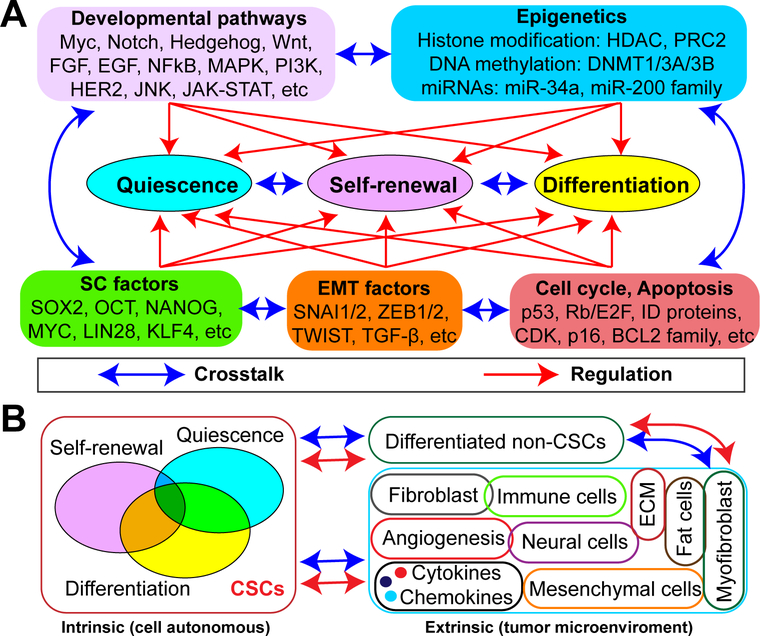Figure 2. Regulation of CSCs.
(A) Intrinsic CSC regulatory mechanisms. Depicted are the five frequently reported mechanisms (Developmental pathways, Epigenetics, SC factors, EMT factors, and Cell cycle/Apoptosis) that control the main properties of CSCs (Self-renewal, Differentiation, and Quiescence). Although genetics is not specifically highlighted, it serves as a ‘primer’ and, as such, genetic alterations will impact CSC properties via affecting one or more of these mechanisms. Quiescence, self-renewal and differentiation are the key features of CSCs and are dynamically regulated by diverse factors. Each one of these mechanisms may modulate all three CSC traits and the mechanisms and CSC properties are constantly and reciprocally cross-talking with and to each other to form an intricate regulatory network.
(B) Extrinsic CSC regulatory mechanisms. A clinically overt tumor contains CSCs, differentiated/bulk non-CSCs and a tumor microenvironment (TME). Depicted is the cellular basis of the crosstalk between these three components, highlighting the reciprocal interactions and regulation between them.

